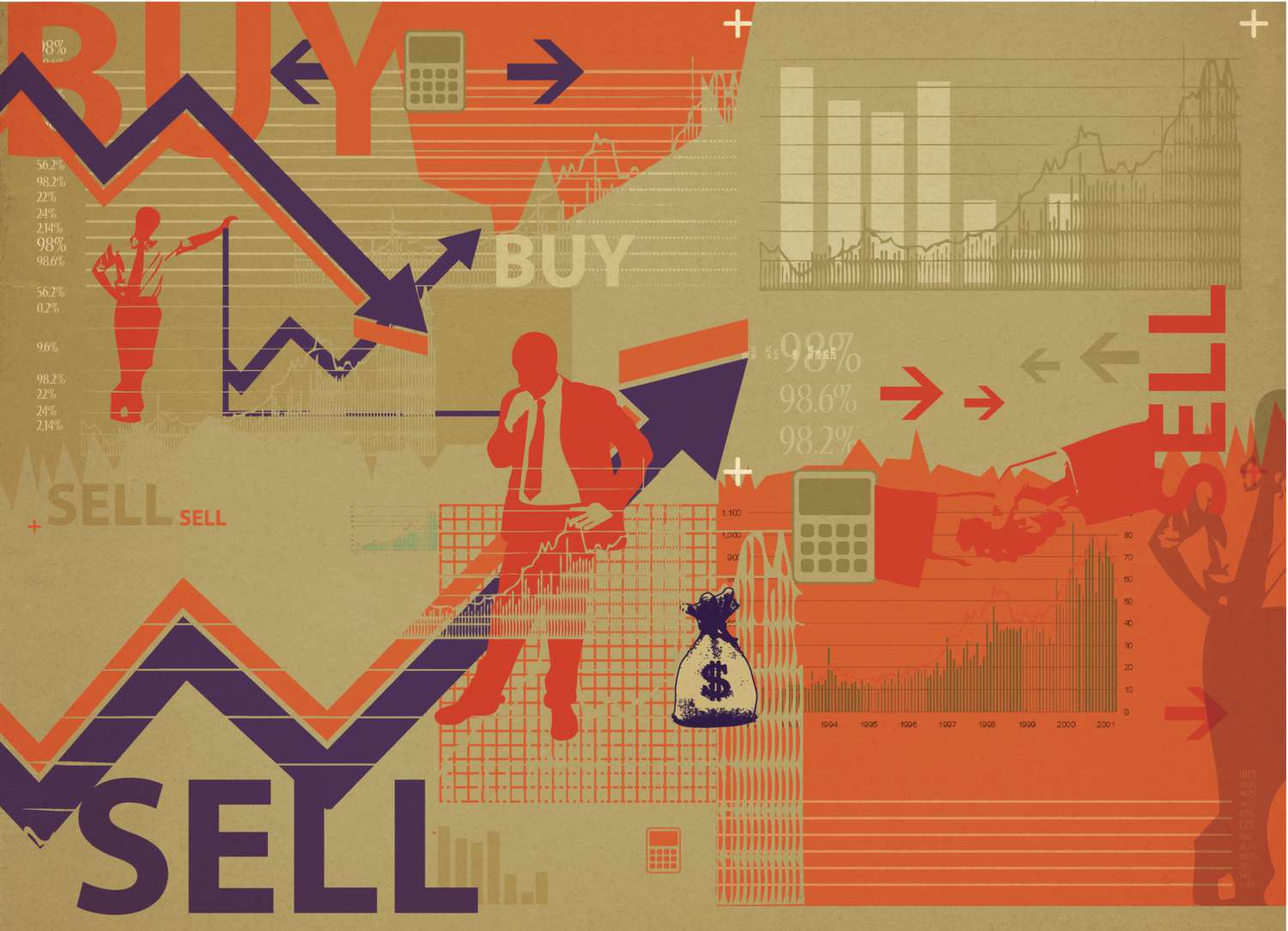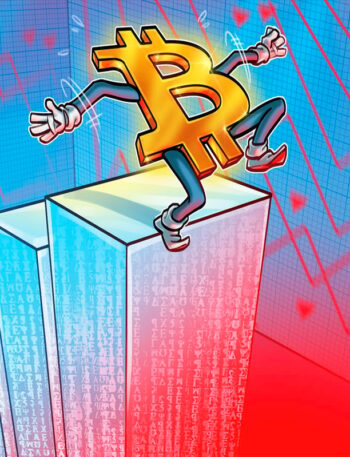Subprime mortgage crisis. Credit crisis. Credit defaults swaps. TARP. “Too big to fail.” Phrases like these were ubiquitous in the fall of 2008. The period ranks among the most devastating in U.S. financial market history, and those who lived through it will never forget the turmoil. The collapse, which triggered the worst economic downturn since the Great Depression, wasn’t the result of a single event but years of risky financial practices.
While many Americans recall watching in horror as the Dow Jones Industrial Average plummeted nearly 780 points in a single day in October of that year—then its biggest one-day drop in history—the seeds of a crisis that would cost the global economy more than $2 trillion of economic growth were planted years earlier.
So what happened, and why? Read on to learn the reasons for one of the U.S. worst stock market crises.
Key Takeaways
- The 2008 financial crisis resulted from a convergence of multiple factors, including a housing bubble, risky mortgage lending, complex financial products, and inadequate regulation—not just subprime mortgages alone.
- Wall Street’s creation of mortgage-backed securities (MBS) and credit default swaps (CDS) spread housing market risks throughout the global financial system, magnifying the impact when the bubble burst.
- The crisis led to the largest financial reforms since the Great Depression, including the Dodd-Frank Act and the creation of the Consumer Financial Protection Bureau to prevent predatory lending.
- Between 2007 and 2009, U.S. households lost over $16 trillion in net worth, the value of the stock market fell by half, and unemployment reached 10% as the crisis turned into the Great Recession.
- While today’s financial system has more safeguards against such a crisis, growing complexity in financial markets, the rise of derivatives based on cryptocurrencies, and “shadow banking” could create new risks that require vigilance.
Causes of the 2008 Stock Market Crash
The story of the 2008 stock market crash is more than just numbers on a screen or complex financial instruments. It’s about homeowners who lost everything when their adjustable-rate mortgages suddenly jumped beyond what they could afford, retirees who had their life savings cut in half, and workers who lost jobs as businesses shuttered in the subsequent Great Recession. Understanding how this crisis unfolded isn’t just about learning history—it’s about recognizing warning signs that could prevent future financial disasters.
Here’s a breakdown of the main factors behind the crash:
1. Housing Bubble and Subprime Mortgages
The crisis began with a housing bubble, fueled by years of ultra-low interest rates and an increased availability of mortgages. Financial institutions offered “subprime” mortgages to people with low creditworthiness, often with little or no income verification. These high-risk loans, initially affordable because of low introductory rates, became unmanageable when interest rates adjusted upward, causing many borrowers to default.
Throughout the 1990s and early 2000s, the government encouraged homeownership and supported policies that enabled lenders to offer mortgages to more people, including those with low credit scores. Policies like the Community Reinvestment Act (1977) were often blamed for the crisis, but it’s more accurate to say that the private sector took these policies and ran with them by loosening credit standards and pursuing aggressive lending practices to profit from and prop up the housing boom.
2. Securitization and Mortgage-Backed Securities
Financial institutions pooled these risky subprime loans into mortgage-backed securities (MBS) and sold them to investors worldwide. MBSs were complex financial products that appeared to offer high returns with low risk, because of the presumed diversification of underlying assets. However, as housing prices fell and defaults increased, the value of these securities plummeted, creating a ripple effect across the financial system.
3. Credit Default Swaps and Derivatives
To further “protect” against potential losses on MBS, banks and investors turned to credit default swaps, a form of insurance on these securities. Thus, another popular investment vehicle during this period became a credit derivative, the credit default swap (CDS).
CDSs were designed to be a method of hedging against a company’s creditworthiness, similar to insurance. But unlike the insurance market, the CDS market was largely unregulated. This meant that there was no requirement that the issuers of CDS contracts maintain enough money in their reserves to pay out under a worst-case scenario (such as an economic downturn). In early 2008, this spelled potential disaster for American International Group, Inc. (AIG), one of the nation’s leading financial companies, when it couldn’t meet claims and announced huge losses in its portfolio of underwritten CDS contracts.
4. Widespread Use of Adjustable-Rate Mortgages
Among the most potentially harmful of the mortgages offered to subprime borrowers were the interest-only ARM and the payment option ARM. Both were adjustable-rate mortgages. These mortgages allow the borrower to make much lower initial payments than would be due under a fixed-rate mortgage. After a period of time, often only two or three years, these ARMs reset, often at higher rates. The payments then fluctuate as frequently as monthly, sometimes resulting in much larger payments than those the borrower paid initially.
In the up-trending market (and growing housing bubble) that existed in the early 2000s, these mortgages were thought to be virtually risk-free. Borrowers could end up with positive equity despite their low mortgage payments because their homes had increased in value since the purchase date. If they couldn’t afford the higher payments after their mortgage rates reset, they could simply sell the homes for a profit.
5. Massive Rise in Consumer Debt
To compound the potential mortgage risk, total consumer debt, in general, continued to grow at an astonishing rate. In 2004, consumer debt hit $2 trillion for the first time, meaning it doubled in less than 10 years.
6. Changes in Regulatory Oversight
The years leading up to the 2008 financial crisis were marked by significant regulatory and legal changes that reduced oversight and fueled risk-taking in the financial industry. Here are some key changes from the 1980s through the early 2000s that helped set the stage for the crisis:
1982: The Garn-St. Germain Depository Institutions Act
This act deregulated the savings and loan industry, allowing institutions to expand into new types of lending, such as adjustable-rate mortgages. It was intended to help struggling banks but led to riskier lending practices. The act is sometimes credited with setting a precedent for financial deregulation that would continue through the 1980s and beyond.
1994: The Riegle-Neal Interstate Banking and Branching Efficiency Act
This act removed barriers for banks to operate across state lines, facilitating the growth of large, national banks. While this helped banks diversify, it also contributed to the consolidation of banking power, allowing institutions to become “too big to fail” and increasing systemic risk across the financial system.
1999: The Gramm-Leach-Bliley Act (GLBA)
GLBA, also known as the Financial Services Modernization Act, repealed major parts of the Glass-Steagall Act of 1933, which had previously separated commercial banking from investment banking. By allowing banks to merge with securities and insurance companies, GLBA paved the way for “universal banks” that engaged in a wide range of financial services, including risky investments. This increase in complexity and interconnectedness heightened the risk of a widespread financial collapse.
2000: The Commodity Futures Modernization Act (CFMA)
The CFMA removed many regulations from derivatives trading, including credit default swaps (CDS), a key factor in the 2008 financial crisis. By exempting CDS and other complex derivatives from regulation, the act allowed institutions to take on massive risks, which compounded losses when defaults on subprime loans increased. The lack of oversight meant that companies like AIG could issue large amounts of CDS with minimal capital reserves to cover potential losses.
Shift to “Light-Touch” Regulation in the 2000s
The 2000s were marked by an overall shift toward “light-touch” regulation, especially within agencies like the SEC. The focus was on allowing financial markets to self-regulate and emphasizing innovation over caution. This attitude led to minimal oversight of mortgage-backed securities and collateralized debt obligations (CDOs) that bundled subprime loans, which ultimately proliferated risk throughout the system.
2004: SEC’s Net Capital Rule Change
In 2004, the Securities and Exchange Commission (SEC) allowed major investment banks to increase their leverage ratios significantly, meaning they could borrow much more relative to their capital. Previously, banks had been limited to a leverage ratio of 12 to one, but the new rule allowed ratios as high as 30 to one or even 40 to one. This change enabled banks to take on enormous risks by financing long-term assets with short-term debt, increasing their vulnerability to any market downturn.
7. Structural Changes in the Market Involving Fannie and Freddie
In the wake of the crash, many of those who backed the deregulatory efforts of the previous years were intent on blaming two government-sponsored enterprises, Fannie Mae (Federal National Mortgage Association) and Freddie Mac (Federal Home Loan Mortgage Corporation), for the crisis. Here’s a look at their involvement and why they’re often mentioned in discussions about the crash:
Role in the Housing Market
Fannie Mae and Freddie Mac were created to promote homeownership by buying mortgages from lenders, packaging them into securities, and selling them to investors. This helped lenders free up capital to issue more loans, thus increasing homeownership. By the 2000s, both entities were heavily involved in purchasing mortgages, including riskier subprime loans, from the private market.
Increased Risk-Taking in the Early 2000s
Under pressure from both political and market forces to expand homeownership, Fannie and Freddie increasingly purchased subprime and alt-A loans (those with limited documentation or low credit quality). Although they initially held stricter underwriting standards than private lenders, Fannie and Freddie relaxed their criteria to compete with private institutions benefiting from the booming housing market.
Securitization of Risky Mortgages
Like private banks, Fannie and Freddie pooled mortgages into mortgage-backed securities and sold them to investors. While they maintained guarantees on some of these securities, they held significant exposure to the housing market. When housing prices fell, and foreclosures surged, Fannie and Freddie suffered substantial losses, needing a federal bailout in 2008 to prevent collapse. Their financial distress contributed to the crisis’s depth but did not initiate it.
Private Market Influence
Much of the riskiest lending during the housing bubble came from private lenders who issued subprime mortgages with even lower standards than those of Fannie and Freddie. These private institutions created their own MBSs, often without the oversight or implied government backing that Fannie and Freddie had. This private-market securitization, which exploded in the early 2000s, exposed the financial system to unmanageable levels of risk and was a core driver of the crisis.
Systemic Impact, Not Direct Cause
Fannie and Freddie were caught in the wave of broader housing market speculation and lending practices but didn’t drive the most extreme forms of subprime lending. Buying riskier loans contributed to inflating the housing bubble and increasing overall exposure to the housing market’s downturn, which worsened the crisis when it arrived. However, private lenders and Wall Street banks were primarily responsible for the riskiest practices and highest volumes of subprime loans.
8. Collapse of Major Financial Institutions
The most proximate cause (the last domino to fall, as it were) of the crisis was the collapse of storied institutions at the heart of Wall Street. As mortgage defaults rose, financial giants holding large amounts of MBS, such as Lehman Brothers, faced mounting losses and liquidity crises. Lehman’s bankruptcy in 2008 triggered widespread panic, as it demonstrated that even major institutions could collapse. This eroded investor confidence globally, froze credit markets, and led to widespread economic distress.
$150 billion
The amount of bailout money AIG received from the U.S. federal government in 2008, which the company repaid with interest by 2013.
The 2008 Stock Market Crash: Timeline of Events
April 2, 2007: Major Subprime Lender Goes Under
New Century Financial Corporation, a leading subprime mortgage lender, files for bankruptcy.
July 31, 2007: Bear Stearns Files for Bankruptcy
Bear Stearns goes under, drowned in a sea of massive losses resulting from underwriting many of the investment vehicles linked to the subprime mortgage market.
Oct. 9, 2007: Stock Market Peak
It was soon obvious to all that the market was in trouble, and a subprime mortgage crisis was looming. Homeowners defaulted at high rates as the creative variations of subprime mortgages reset to higher payments as home prices declined.
Many homeowners reported being “upside down”—they owed more on their mortgages than their homes were worth—and could no longer flip them to make themselves whole. Instead, they lost their homes to foreclosure and often filed for bankruptcy in the process. The subprime meltdown was taking its toll on homeowners and the real estate market.
Despite this apparent mess, the financial markets continued higher into October 2007, with the Dow reaching a closing high of 14,164 on Oct. 9.
December 2007: U.S. Enters Recession
The turmoil eventually caught up, and by December 2007 the United States had fallen into a recession. Officially declared later, the U.S. economy was on the precipice as consumer spending fell, debts were being defaulted on, and unemployment was rising.
March 2008: Bear Stearns Acquired by JPMorgan Chase
In a government-brokered deal, Bear Stearns is sold to JPMorgan & Chase & Co. (JPM) for a fraction of its former value. The U.S. Federal Reserve stepped in with emergency funding to ensure the deal closed, aiming to prevent wider panic.
July 2008: IndyMac Bank Fails
By early July 2008, the Dow Jones Industrial Average would trade below 11,000 for the first time in over two years. That would not be the end of the decline.
IndyMac, a major mortgage lender, collapses under the weight of loan defaults. Its failure becomes one of the largest bank failures in U.S. history, prompting intervention by the Federal Deposit Insurance Corporation (FDIC). It won’t be the last lender to collapse.
Many borrowers who obtained adjustable-rate subprime mortgages with low initial rates received no information from lenders about the details of such loans and found themselves trapped with unaffordable loan obligations when rates rose.
Sept. 6, 2008: Federal Takeover of Fannie Mae and Freddie Mac
With the financial markets down almost 20% from their October 2007 peaks, the government announces its takeover of Fannie Mae and Freddie Mac. This was a necessary step because of losses from heavy exposure to the collapsing subprime mortgage market.
Nicholas Roberts / Getty Images
Sept. 15, 2008: Lehman Brothers Declares Bankruptcy
One week later, major investment banking firm Lehman Brothers succumbed to its overexposure to the subprime mortgage market. It announced the largest bankruptcy filing in U.S. history at that time. The next day, markets plummeted, and the Dow closed down 499 points at 10,917.
Sept. 16, 2008: The “Buck Breaks,” AIG Receives Bailout, Panic Spreads, the Fed Lowers Fed Funds Rate
Things now begin moving very quickly. The collapse of Lehman caused the net asset value (NAV) of the Reserve Primary Fund to fall below $1 per share on Sept. 16, 2008. Investors were told that for every $1 invested, they were entitled to 97 cents. Given the staggering losses all around, this might appear insignificant—far from it.
The Reserve Primary Fund was a prominent money market fund, one of the oldest in the U.S. and long considered a stable, low-risk investment vehicle. Money market funds like the Reserve Primary Fund are typically seen as safe places to park cash, as they invest in high-quality, short-term debt such as commercial paper. They aim to maintain a stable NAV of $1 per share, giving investors predictable returns with minimal risk.
However, the Reserve Primary Fund had invested in commercial paper issued by Lehman Brothers, a financial giant with significant exposure to subprime mortgage assets. When Lehman Brothers declared bankruptcy, the value of its commercial paper held by the Reserve Primary Fund suddenly dropped to near zero. This was the first time since the 1994 failure of a small money market fund that a major fund had “broken the buck.”
Breaking the buck sent shock waves through the financial system. Money market funds were widely used by individuals, institutions, and corporations as a safe place for short-term cash. The loss of stability in such a trusted asset class caused immediate panic, leading investors to redeem their holdings en masse across the industry, fearing similar losses in other funds.
Panic breaks out in the money market fund industry, resulting in massive redemption requests. The same day, Bank of America (BAC) announced it was buying Merrill Lynch, the nation’s largest brokerage company.
In addition, the credit rating for AIG is downgraded because of the credit derivative contracts they’d underwritten. AIG, facing insolvency because of losses on credit default swaps, receives an $85 billion government bailout to prevent further destabilization of the financial system.
Finally, on this busy day, the U.S. Federal Reserve announces it would maintain its federal funds rate at 2.0%.
Sept. 17, 2008: SEC Bans Short Selling on Financial Sector Firms
The SEC initiates a temporary ban on short selling financial company stocks to help stabilize the markets. The markets surged on the news, and investors sent the Dow up 456 points to an intraday high of 11,483, closing up 361 at 11,388.
Sept. 18, 2008: Bailout Talks Begin
Treasury Secretary Henry Paulson proposes the Troubled Asset Relief Program (TARP) to buy up to $700 billion in toxic assets from banks to stabilize the financial sector. The news sends the Dow up 410 points.
For investors, those highs will be like the last gasp of air when a roller coaster climbs to its greatest height and is about to drop.
Chris Hondros / Getty Images
Sept. 19, 2008: The U.S. Treasury Announces a Temporary Guarantee for Money Market Funds
In response to Reserve Primary Fund breaking the buck, the U.S. government quickly took steps to stabilize money markets, aiming to restore investor confidence and prevent further runs on these funds.
Sept. 21, 2008: GS and MS Shift to Holding Companies
Goldman Sachs Inc. (GS) and Morgan Stanley (MS), the last two of the major investment banks still standing, converted from investment banks to bank holding companies to be able to obtain bailout funding.
Sept. 25, 2008: Washington Mutual Fails
After a 10-day bank run, the FDIC seizes Washington Mutual, then the nation’s largest savings and loan and one heavily exposed to subprime mortgage debt. Its assets were transferred to JPMorgan Chase.
Sept. 29, 2008: Massive Market Decline
The Dow declined 774 points (6.98%), at the time the largest one-day point drop in history.
Oct. 3, 2008: TARP Passes
A reworked $700 billion TARP plan, renamed the Emergency Economic Stabilization Act of 2008, passed with a bipartisan vote in Congress.
Oct. 6-10: Market Collapse Continues
The Dow continues to tumble, closing below 10,000 for the first time in years. By Oct. 10, it would bottom at 7,882, reflecting severe investor uncertainty and panic.
Matthew Cavanaugh / Getty Images
Late 2008 – Early 2009: Federal Reserve Lowers Interest Rates to Near Zero
To stimulate the economy, the Federal Reserve reduces interest rates, aiming to improve borrowing conditions for businesses and individuals.
0.16%
The U.S. Federal Reserve’s key interest rate was 5.26% in mid-2007. By the end of 2008, it was 0.16%.
March 2009: Market Bottoms Out
The S&P 500 reaches its lowest point at 676.53. This signals the lowest point of the crisis, with gradual recovery beginning thereafter because of government intervention and market adjustments.
2009-2010: Dodd-Frank Wall Street Reform and Consumer Protection Act
A series of post-crisis regulatory reforms begins. The Dodd-Frank Wall Street Reform and Consumer Protection Act, introduced to overhaul financial regulation, aimed to reduce risks in the financial system, increase transparency, and protect consumers from unfair lending practices.
The Aftermath
The 2008 financial crisis didn’t just disappear when the stock market finally hit bottom. Its effects rippled through the American economy for years, fundamentally changing how banks operate, how homes are bought and sold, and how the government regulates Wall Street.
The human toll was staggering. According to data from the U.S. Federal Reserve, by 2010, over 8.7 million American jobs had vanished. Nearly 10 million families lost their homes to foreclosure. The average U.S. household lost about $30,000 in home value and $70,000 in stock wealth. The unemployment rate peaked at 10% in October 2009, and many workers who lost jobs during this period never fully recovered their earning potential.
The government’s response reshaped the financial industry. Dodd-Frank introduced the most sweeping changes to financial regulation since the Great Depression. The law created the Consumer Financial Protection Bureau to guard against predatory lending practices, required banks to maintain larger cash reserves, and implemented the “Volcker Rule,” limiting banks’ ability to make risky investments with customer deposits.
Banks now face stricter oversight and must undergo regular “stress tests” to prove they could survive economic shocks. Mortgage lenders must verify borrowers’ ability to repay loans. However, new financial innovations and the continued growth of “shadow banking”—financial services provided by nonbank institutions—suggest that while the next crisis might not look exactly like 2008, the potential for financial instability remains.
What Caused the Financial Crisis of 2008?
The growth of predatory mortgage lending, unregulated markets, a massive amount of consumer debt, the creation of “toxic” assets, the collapse of home prices, and more contributed to the financial crisis of 2008.
How Much Did Housing Prices Drop in 2008?
From July 2006 to January 2009, the national median house price dropped by 29%.
How Long Did the 2008 Housing Market Crisis Last?
Different geographic areas recovered at different speeds. However, in general, the recovery began in 2011, more than three years after the housing crisis began. Home prices had fully recovered by 2012.
The Bottom Line
The 2008 financial crisis serves as a stark reminder that financial innovation without proper oversight can have devastating consequences. What began with a housing bubble and risky mortgage lending practices escalated into a global financial meltdown through complex financial products and inadequate regulation.
While new safeguards and regulations make an exact repeat of 2008 less likely, the crisis offers enduring lessons about the dangers of excessive risk-taking, the importance of transparency in financial markets, and the interconnected nature of global finance. Perhaps most importantly, it demonstrates how problems in seemingly isolated market segments can quickly spread to threaten the entire financial system, affecting everyone from Wall Street bankers to Main Street homeowners.




